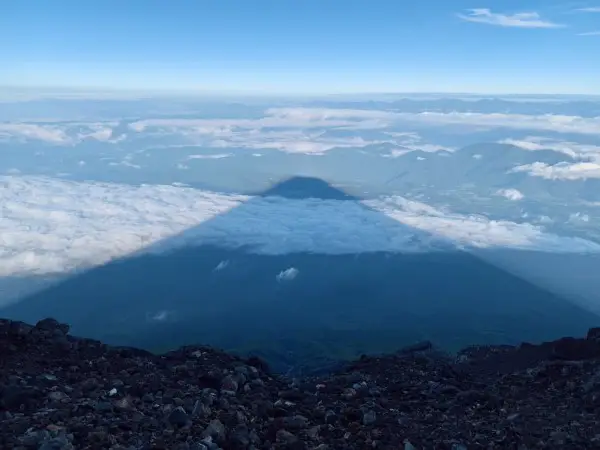
Most people start their ascent to Mount Fuji from one of its 5th stations, which easily can be reached by bus. However, if you want to follow the footsteps of ancient monks climbing Japan’s most sacred peak, want to experience the beauty of Mount Fuji on a deeper level without the crowds, try climbing Mount Fuji from the bottom via the traditional pilgrim’s route – the Yoshida Trail. In this blog, I share the details of my hike.
2024 UPDATE – NEW RESTRICTIONS & NO BULLET-CLIMBING!
The total number of climbers on Mount Fuji has almost returned to very high pre-pandemic levels (221,000 in 2023 compared to 235,000 in 2019). As before, over 60% of climbers used the Yoshida trail, which is why, starting in 2024 new restrictions will be implemented at the most popular Yoshida Trail to limit the crowds:
- Daily limit of 4,000 hikers;
- An additional charge of JPY 2,000 (on top of the regular JPY 1,000 fee charged on all trails).
Returning crowds and an extra fee are additional reasons to choose the less travelled routes.
Additionally, all four Mount Fuji trails will be closed from 4pm to 3am for hikers without reservations at the mountain huts. This is to prevent bullet-climbing, which is hiking at night with the intention of reaching the summit by sunrise without staying in a hut. Only hikers staying at huts will be able to climb Mount Fuji at night in order to see the famous sunrise from the summit.
What's in this blog post?
Start from the ancient shrine
The history of climbing Mount Fuji dates back to the 7th century, when the first monk stood on its sacred peak. His route has been marked by today’s Yoshida Trail. The Kitaguchi Hongu Fuji Sengen-jinja Shrine was his starting point. Climbing Mount Fuji from the bottom and starting at the shrine is not very popular these days as it doubles both the elevation gain and time needed for the ascent. However, if you love hiking in the mountains, would like to have some Mount Fuji all to yourself and have enough time, try to climb Mount Fuji from the bottom – like in the old days, with no rush. Climb the whole sacred mountain, not just its half 😉
You will get to appreciate the diversity of nature better and get to know the historical background of Japan’s highest peak. Besides, it will extend your adventure by one day.
a longer adventure = more unforgettable moments
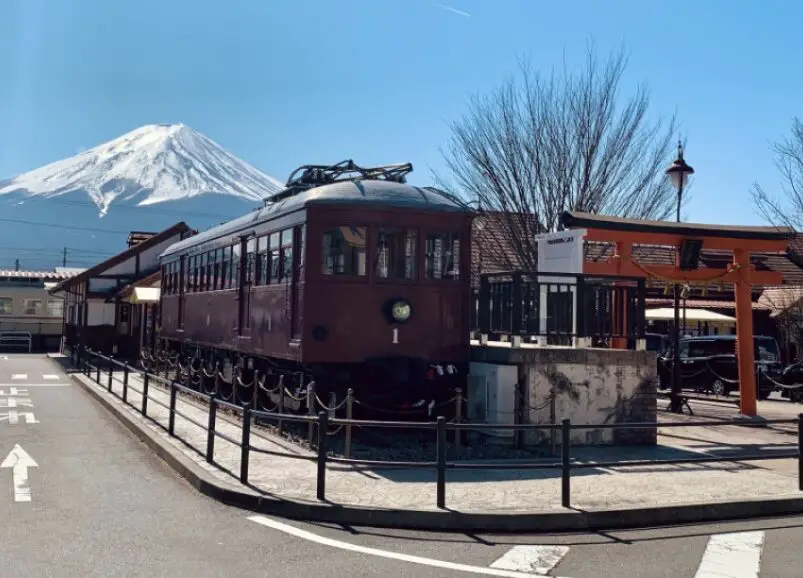
Climbing from the bottom (whole mountain) vs. from the 5th Station (1/2 of the mountain)
Of course, if you don’t have time or you are not such a crazy mountain enthusiast like me, start your ascent from the 5th Station and I guarantee that it will be an unforgettable adventure. Take a look at the comparison of the two climbing variants below to decide which one suits you better.
YOSHIDA TRAIL | Traditional pilgrim’s route | Most popular climbing route |
Starting point | Kitaguchi Hongu Fuji Sengen Shrine (850m) | Fuji Subaru Line 5th Station (2,300m) |
Time to get to the 5th Station (2,300m) | 5-6 h (incl. breaks) | 1 h by bus from Kawaguchiko Station |
Time to climb to the top of Mount Fuji (3,776m) | 3 days / 2 nights | 2 days / 1 night |
Total altitude gain | 2,926m | 1,476m |
If you want to start from the 5th Station, ignore the DAY 1 description and scroll to DAY 2.
And if you have some questions about climbing Mount Fuji via the Yoshida Trail, but not only, check out my latest article here: 100 THINGS ABOUT CLIMBING MOUNT FUJI
I promise you will find all the answers 🙂
CLIMBING MOUNT FUJI FROM THE BOTTOM: THE DETAILS OF MY HIKE
DAY 1. From the shrine (850m) to the 5th Station (2,250m)
Getting to the Yoshida trailhead from Tokyo
From Tokyo Station we took the bus towards Kawaguchiko Station and got off a little earlier at Fujisan Station. Normally it’s a 30-minute uphill walk or a 15-minute bus ride from Fujisan Station to the shrine, but we were lucky. Our friend Corrinne happened to be in the same area for the Yoshida Fire Festival and gave us a lift to the shrine. Due to the highway traffic jam, which on weekends unfortunately happens quite often in this area, we started our climb at the shrine late – at 2 pm.
Kitaguchi Hongu Fuji Sengen-jinja Shrine
Kitaguchi Hongu Fuji Sengen-jinja (850m) is one of those incredible Japanese shrines, immersed in nature and surrounded by thousand-year-old cedars believed to protect the shrine. Ancient stone lanterns stand on both sides of the entrance path leading to the massive torii gate. But we headed towards the small gate at the back of the shrine. It is the starting point of the traditional pilgrim’s route to Mount Fuji, where our ascent started as well <3

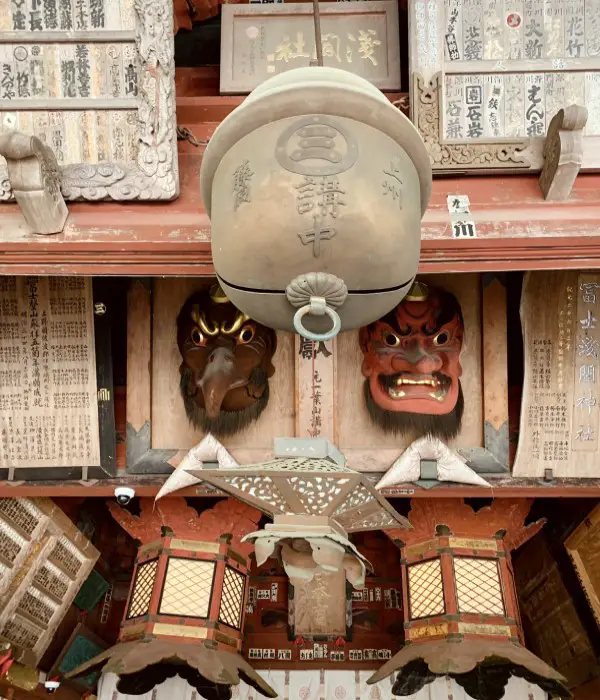
Sengen Shrine marks the beginning of the ancient Pilgrim's Mount Fuji Trail
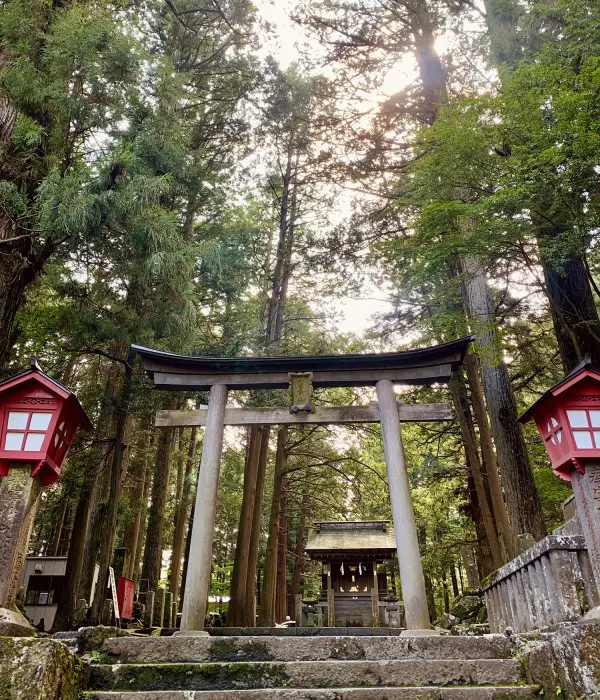
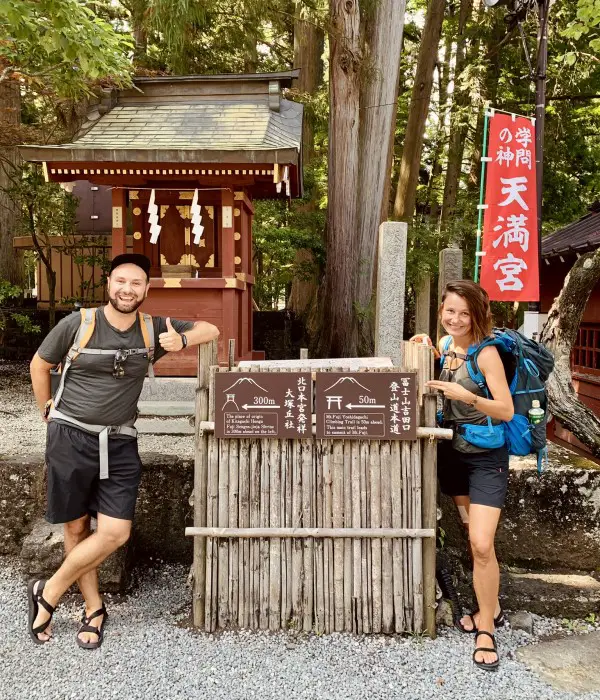
The first (easier) part of the climb to the Mount Fuji’s holy area
It took us 1 hr 20 min to get to Naka no Chaya teahouse at 1,100m. We decided to follow the Yoshida Recreational Footpath through the forest, but you can also walk this entire 4-km distance on a paved road. Naka no Chaya, offering simple udon noodles, was the first and the only place on the trail where we could refill our water bottles, or buy something that day. So remember to refill your water supplies as well, it’s a long way to the 5th Station.
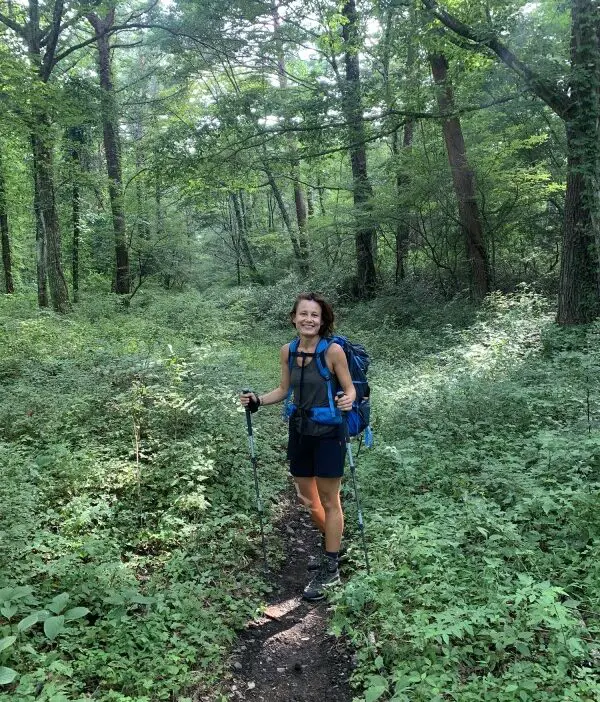
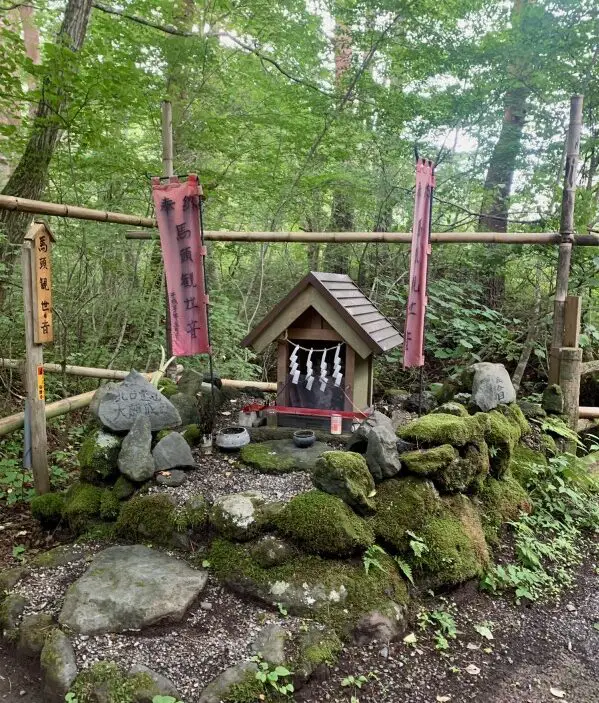
Walking along the pilgrim's route

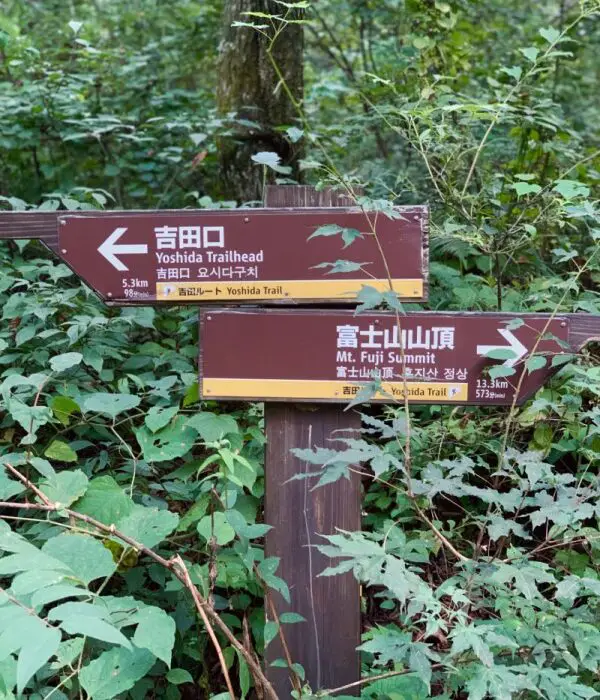
We arrived at Umagaeshi (1,450m), which literally means “horses return” and marks the entrance to the holy area of Mount Fuji, after about an hour. In the old days, horses could not go any further. It was just too steep. The peacefulness of this immersed in the forest rest place, mossy lanterns and graceful torii gate quickly made me realize that it was worth taking this longer, traditional pilgrim trail.

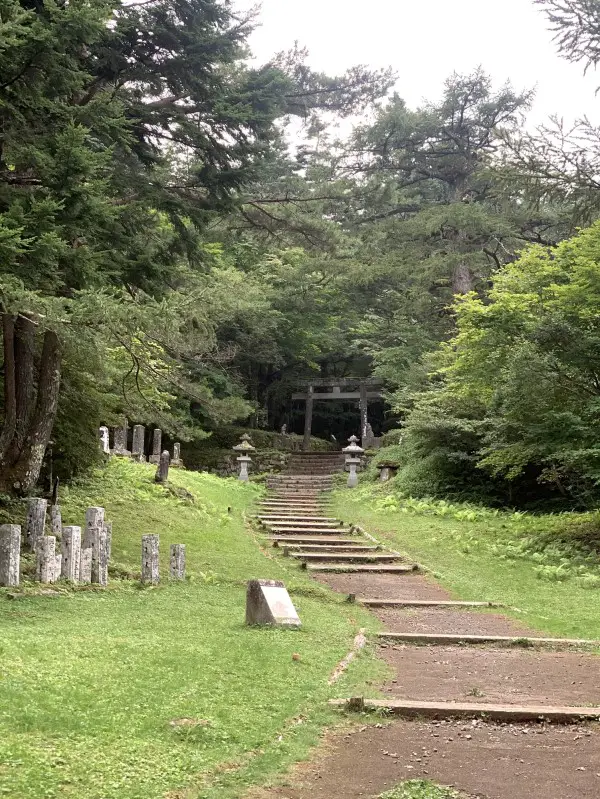
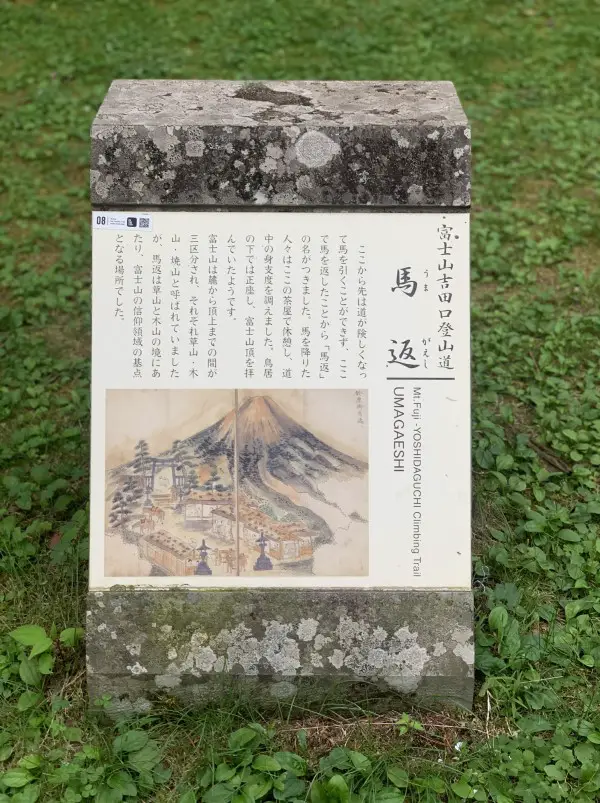
According to Google, one of the historical Umagaeshi huts offers Mount Fuji spring water, but probably, because we got here late, it was already closed. Nevertheless, it was a great place to rest while listening to the sounds of the rustling forest.
You can reach Umagaeshi not only on foot but also by car. In the main season, a rather infrequent bus service from Fujisan Station operates as well.
Hiking from the 1st to the 5th Station of the Yoshida Trail
While the 8-km path from Kitaguchi Hongu Fuji Sengen-jinja to Umagaeshi is relatively flat and represents little altitude gain (800m), the second part of the trail to the 5th Station is steeper and more physically demanding. It is about 800m of elevation over a 4-km section. But don’t worry…
it's still a pleasant hike through the amazing forest 🙂
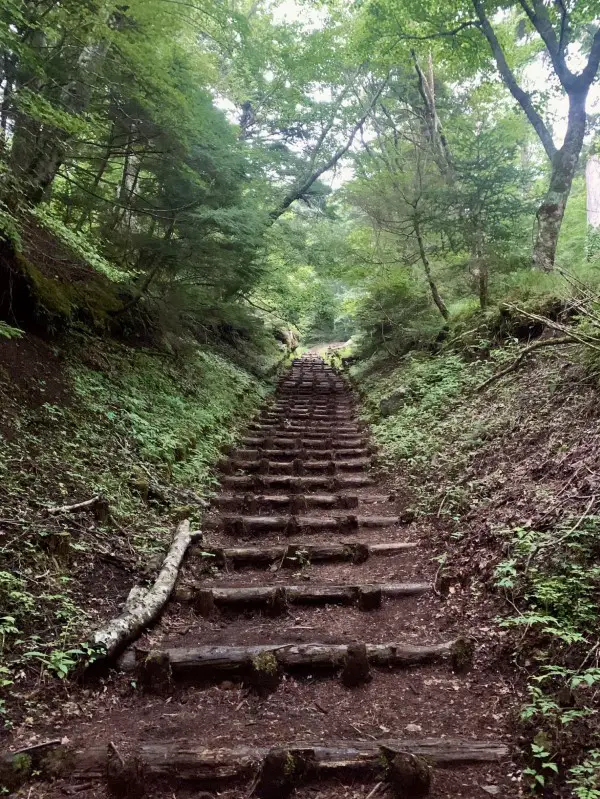

After 3 hours of hiking, at 5 pm we reached the sign marking the Yoshida Trail 1st Station (1,520m), which of course, was a good reason to take a little break 🙂
At the 2nd Station (1,700m), or rather its ruins, we made another break and ate some snacks. Interestingly, back in time women could not cross this point, because Mount Fuji was considered too sacred for them… It wasn’t until 1832 that Tatsu Takayama reached the summit, becoming both the first woman to climb Mount Fuji and a catalyst for the climbing rules change. Hurrah!
We arrived at the 3rd Station (1,840 m) when it got dark, at 6.30 pm. We hiked with headlamps for the last 90 minutes in complete darkness. The lady from the mountain hut where we were going to spend the night called me to check if, and when we would be there. It was so nice of her 🙂
The first and the second station - or rather what's left...

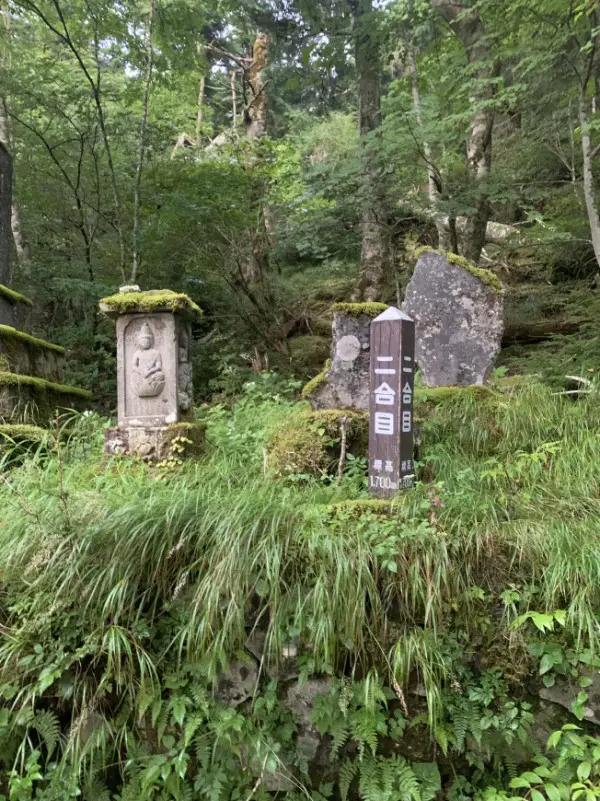

At 8pm, we reached our destination – Satomidaira Seikan-so mountain hut (2,250m). We were immediately shown our sleeping spots and a warm dinner was served. We ordered a beer. It tastes best after a whole day of hiking 🙂

Enjoying simple but good life in the mountain hut 🙂
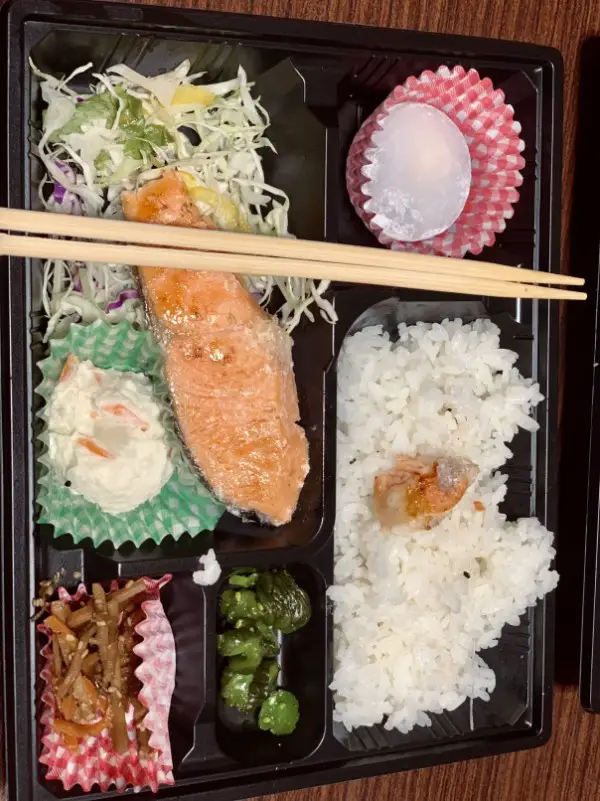


And if you have questions about Mount Fuji huts and booking check out my complete guide for more details:
BOOKING MOUNT FUJI MOUNTAIN HUT – LIST OF HUTS ON ALL TRAILS
DAY 1. SUMMARY (12 km/1400m elevation gain/6 h incl. breaks)
It was a truly unforgettable day. Taking this less travelled part of the Yoshida Trail allowed me to feel Mount Fuji’s fascinating climbing history through my own skin. If there was one thing I could change – I would start the trek earlier to enjoy the views a little bit more. On the other hand, it was a good warm-up before what was about to happen – our Mount Fuji sunrise hike, which also takes place in the dark. Besides, if you want to call yourself a Mount Fuji lover, the mystical forest on its vast slopes at night, is something you just have to experience in life 🙂
Considering the fact that Mount Fuji has been registered as a World Cultural Heritage since 2013, I was a bit surprised that between 1st and 5th station, all the huts are rather ruins and there seemed to be no restoration efforts in place.
DAY 2. Climbing from the 5th Station (2,250m) to the 8th Station (3,250m)
If you prefer the most popular 2-day ascent via the Yoshida Trail, you should take a bus to get to the 5th Station, where the trail starts. The road is closed to private vehicles during the majority of the climbing season. Travelling by bus from Kawaguchiko Station to Fuji Subaru Line 5th Station takes about 50 minutes. Try to get on the bus in the morning to start your ascent as early as possible.
Timetables for buses to the various 5th stations of Mount Fuji
We spent the night in the mountain hut at the 5th Station and when we woke up before 7 am it was raining. I wonder if we would have even set off for the climb if we were now waiting in the rain for the bus at Kawaguchiko Station, which was my initial plan. Maybe due to bad weather we would give up? Well luckily or maybe unluckily 🙂 we were too high to give up the fight.
With no rush we slowly got up, packed our backpacks and tried to arrange some breakfast. As soon as we had the last sip of coffee, it stopped raining. Perfect timing! We started climbing at 9 am.
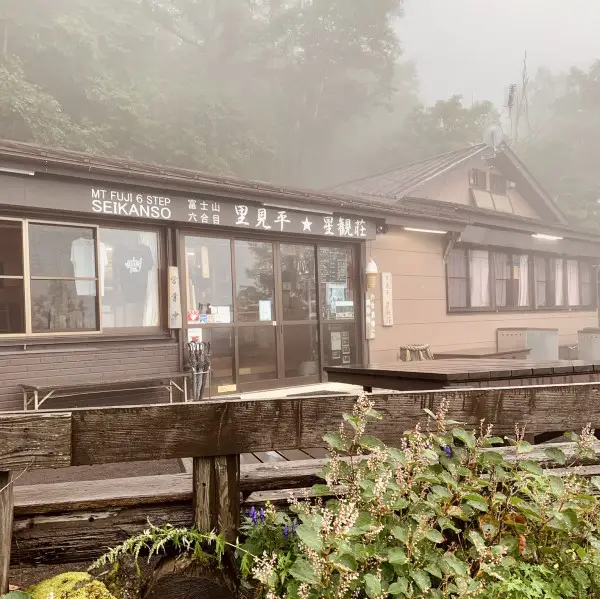
good morning
beautiful world 🙂
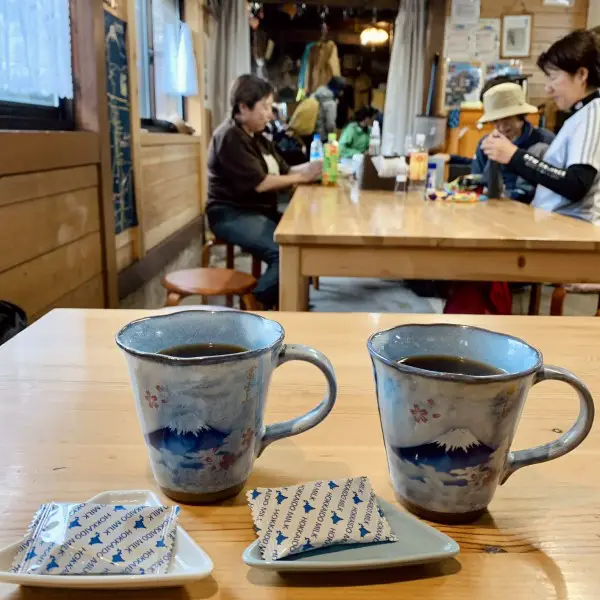
Joining other hikers at the 6th Station of the Yoshida Trail
We stopped at the 6th Station (2,390m) to pay Mount Fuji admission fee (1000 JPY). An elderly employee, who collected our money, was very impressed when he heard that we were climbing Mount Fuji from the bottom – from the shrine. He kept repeating one word “sugoi” (typically used in Japanese when you’re feeling impressed) over and over again – to express his excitement which made me feel so proud of myself 🙂 Well, I’m not such a silly “gaijin” after all! “Gaijin” is a Japanese slang word for a foreigner.
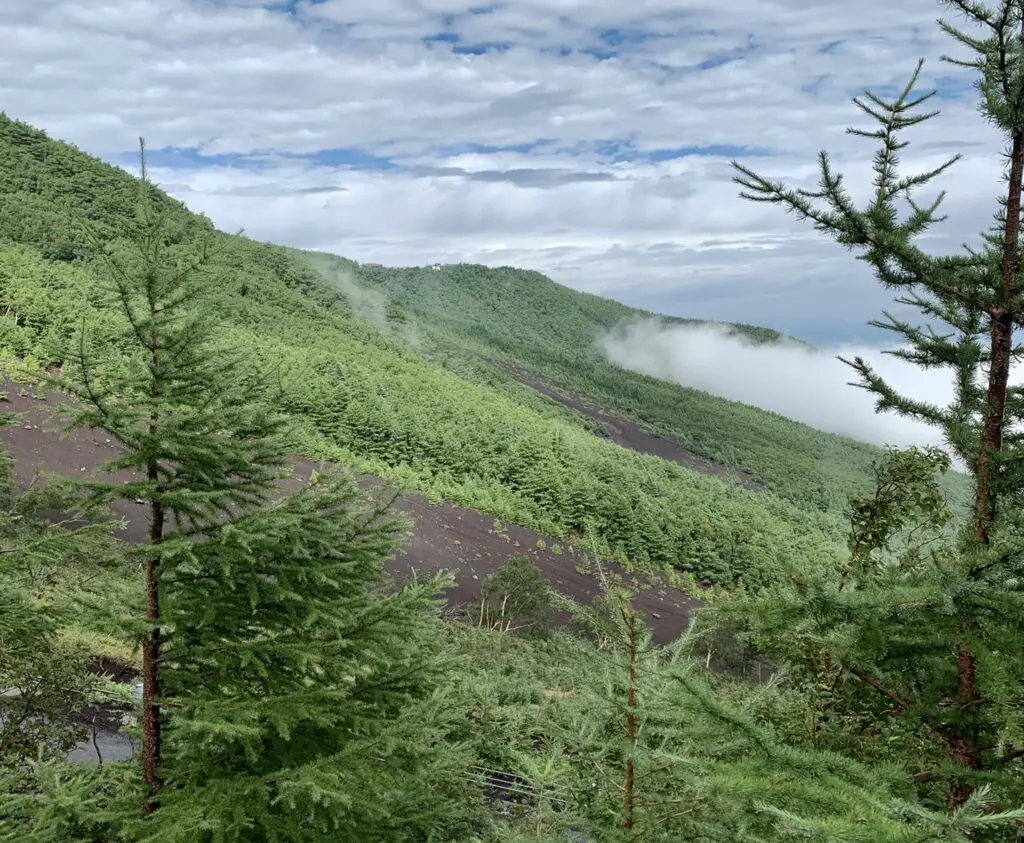
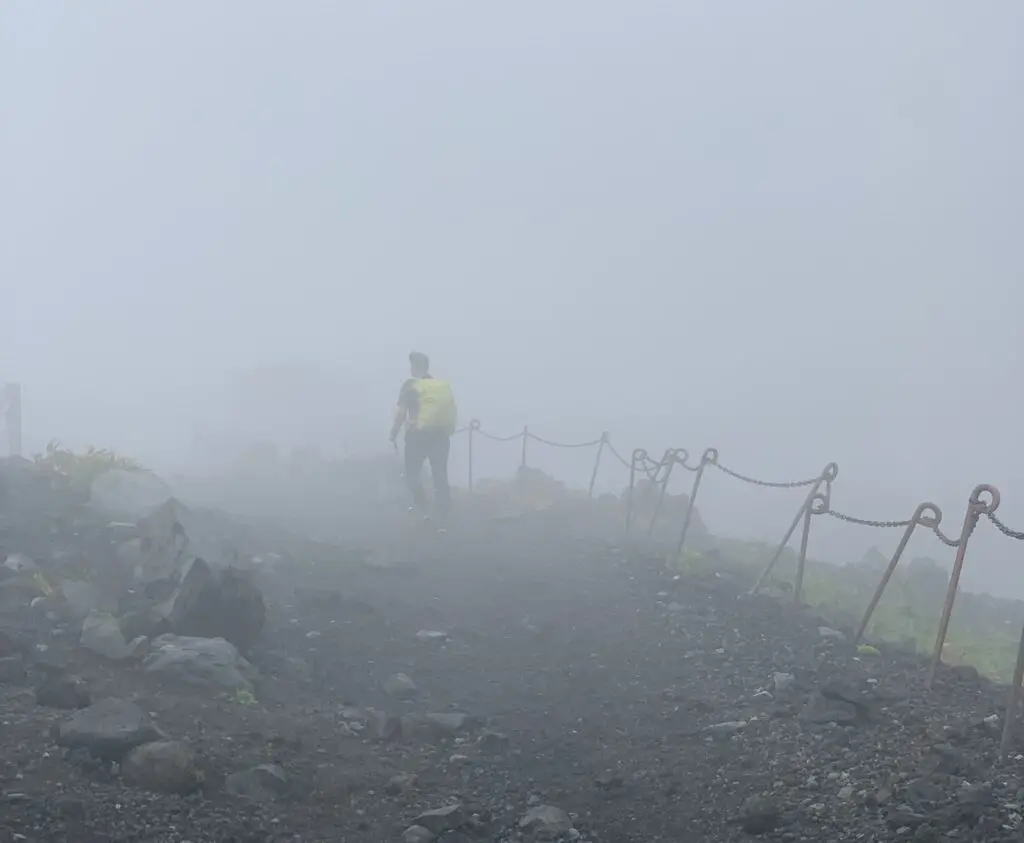
When you are climbing Mount Fuji from the bottom, you bypass the busiest part of the 5th Station on the Yoshida Trail – Fuji Subaru Line 5th Station – consisting of a few restaurants and shops, and where most climbers get off the bus. Until the 6th Station we basically hiked alone.
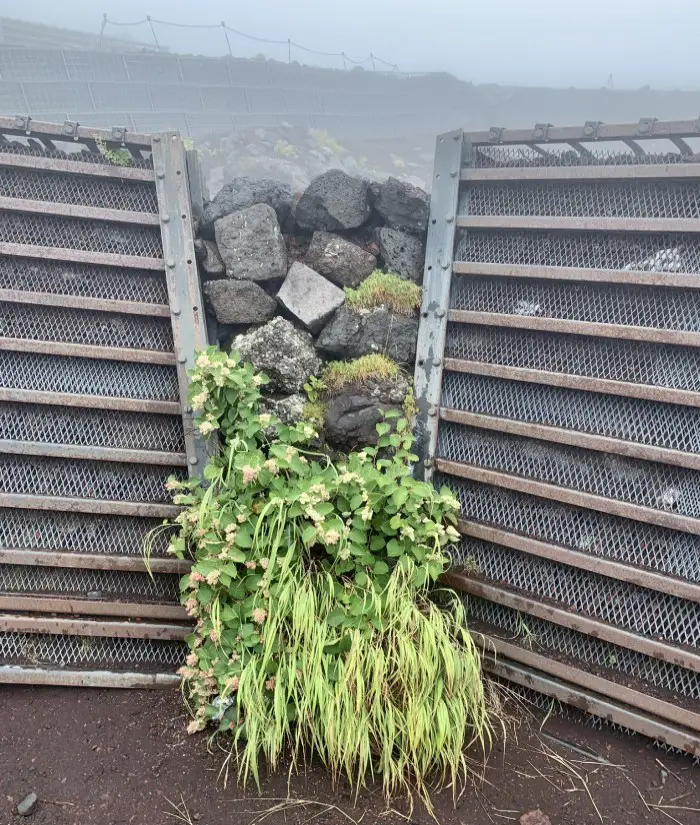
Little signs of life

From the 6th Station, the trail became busier. Most of the descending hikers looked quite tired and sad. I was wondering if I would look so miserable too? The weather was not the greatest, you could not see much. It rained lightly. The sunrise at the top probably didn’t live up to expectations, which was probably why there were so many disappointed-looking faces around me. Having nice weather at the top is a bit like playing roulette…
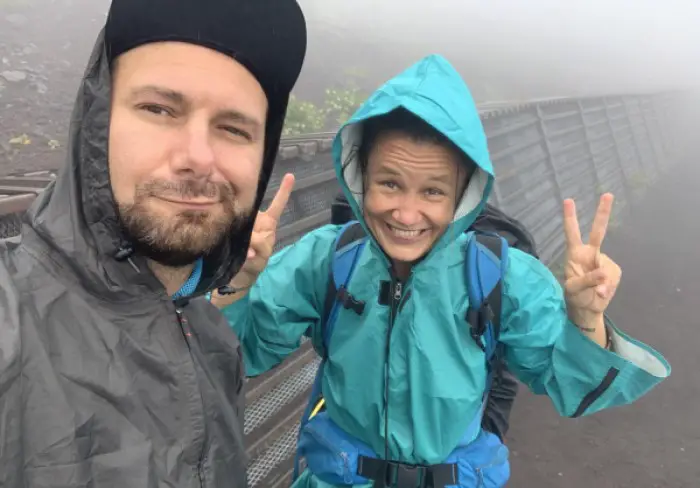
Steep ascent from the 7th Station
The Yoshida Trail becomes steeper from the 7th Station, so it’s worth taking a break in front of one of the mountain huts before the ascent. The sky cleared for a moment so we could enjoy both our beloved rice balls (onigiri) filled with tuna and mayo as well as a little chat with a friendly Japanese, who worked at one of the huts. We rested for about half an hour and started climbing again at around 12.30 pm.
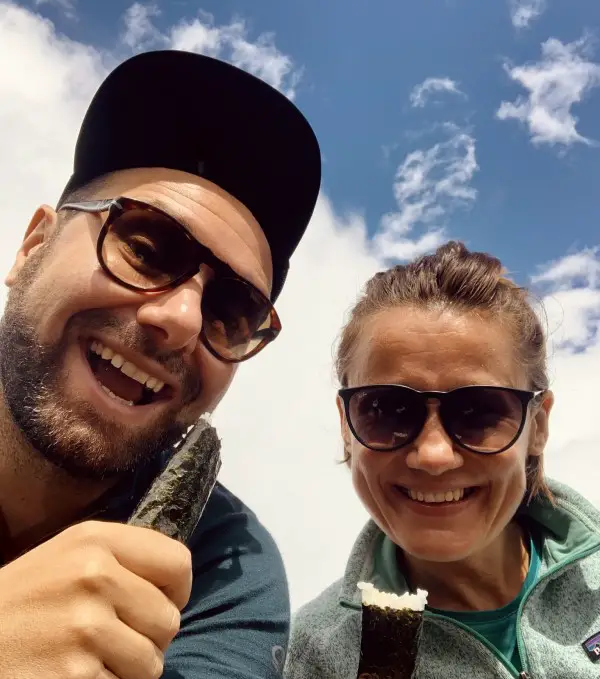
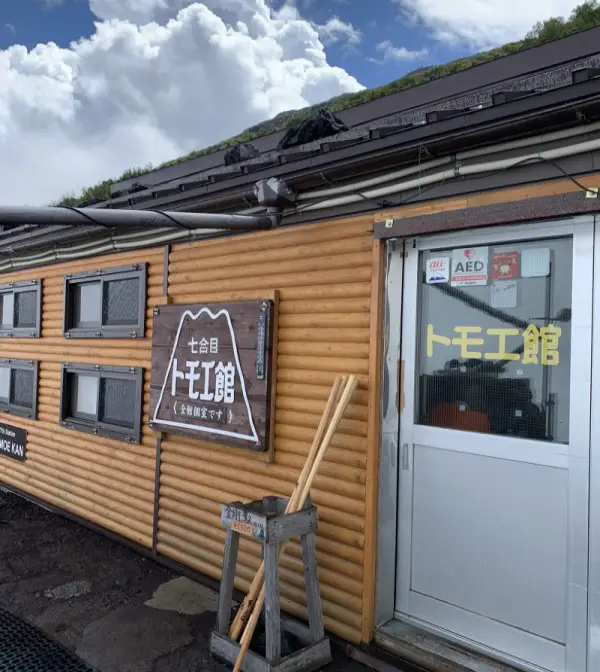
Unfortunately, it started raining again quickly. When we got to the first hut in the 8th Station at little above 3000m, the rain got only worse. We took another break and ordered from the mountain hut the iconic instant ramen dish – a cup noodle. But we couldn’t go inside as we did not have a reservation for the night, it was a new post-pandemic regulation to limit the number of people inside, and we had to eat outside under a tiny roof. It was probably the right place to eat a dish like cup noodles 🙂
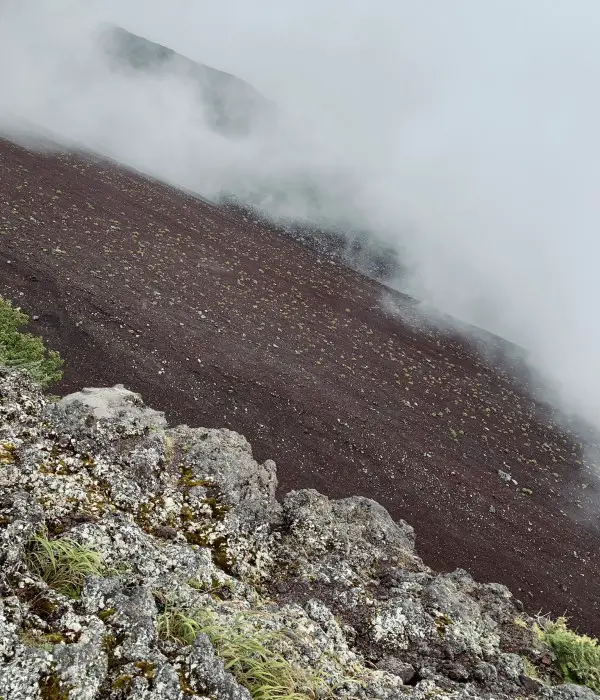
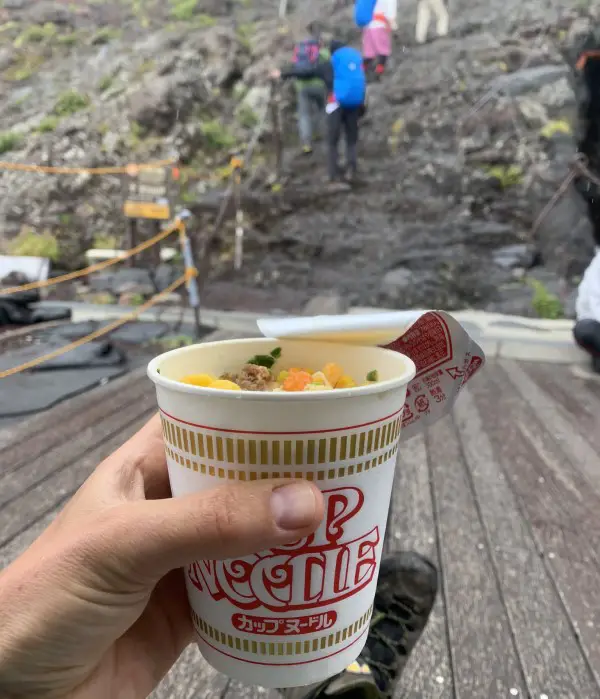

We hiked for the last hour in annoying rain. There were no views, but at least the wind was not strong. Remember to always look at the bright side of life 🙂
Arrived at the mountain hut at the 8th Station
At 3 pm, after 6 hours of hiking, we arrived at our lodge – Ganso-Muro (3250m). With the special towels from the hut, we tried to dry our raincoats, gaiters and shoes. We had to bring all our wet stuff to a place where we were assigned to sleep.
We cleaned a bit with wet wipes, changed our clothes and went to the common area to… order beer. It is probably not a surprise for you anymore 🙂 The sky cleared, we were above the clouds! What an amazing view, what a surprise, what a joy! Kanpai! Cin cin! Na zdrowie!
weather changes dramatically on mount Fuji: 3pm vs.5pm
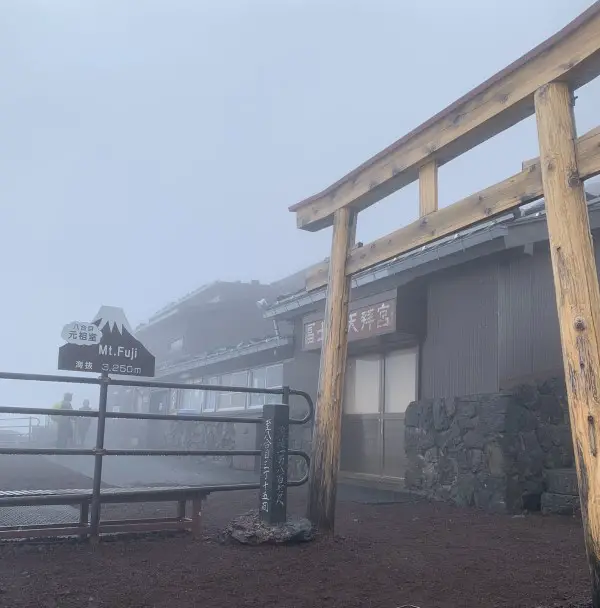
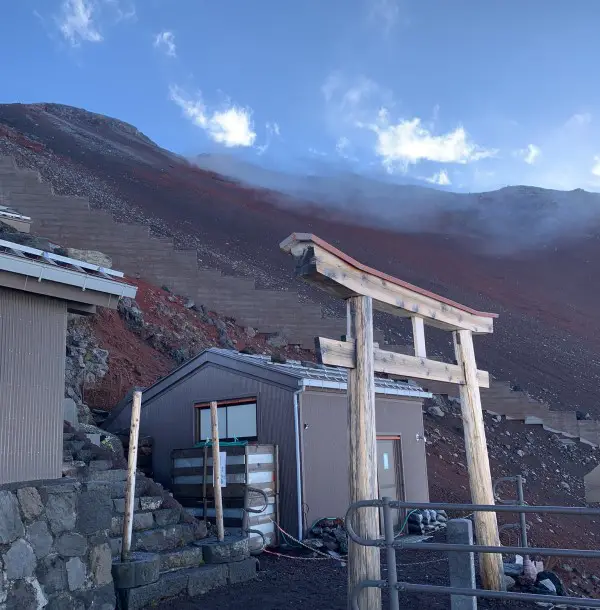
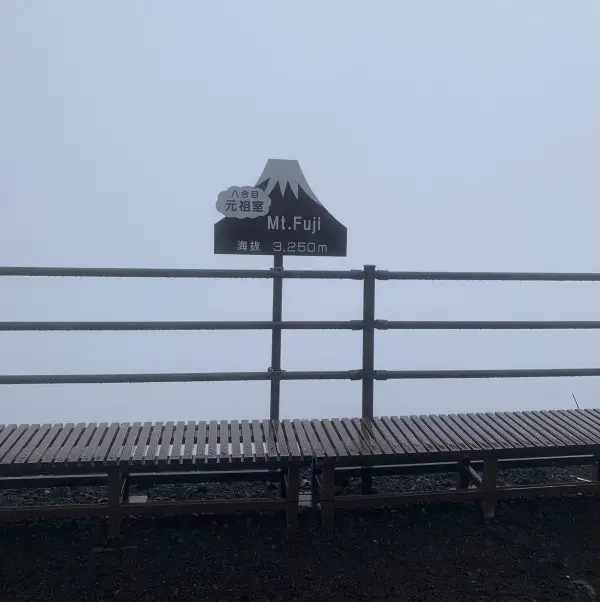
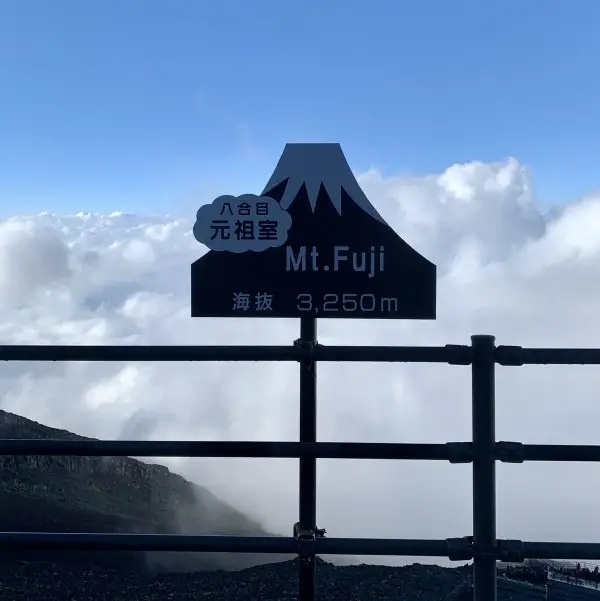


After a simple dinner served at the hut (curry rice), we continued to gaze at the beautiful sky outside the building. When booking an overnight stay in a mountain hut in Japan, you can always choose the option with or without meals. We had our down jackets on as it was only 7 degrees Celsius outside. Shortly after 7pm we went to bed or rather to our mattress. I only managed to read a few pages of the book and fell asleep around 8pm.
Life at the 8th Station

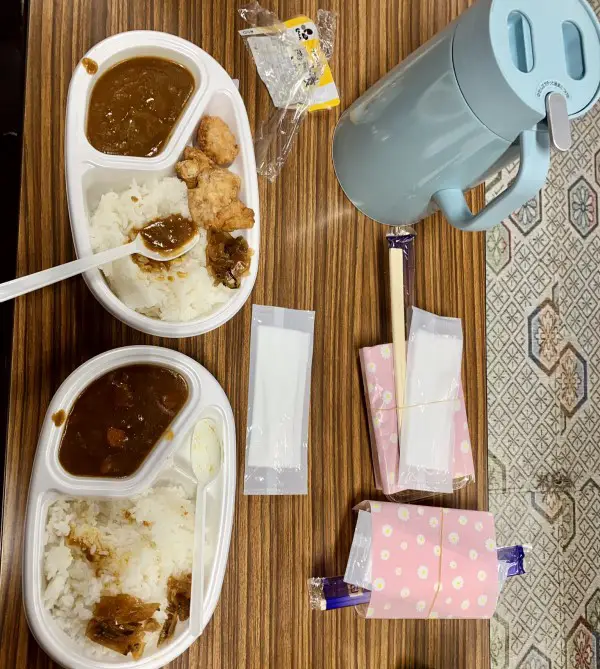

Risk of altitude sickness when climbing Mount Fuji
At this altitude, due to the lower amount of oxygen in the air, some people may begin to experience some altitude sickness symptoms (slight headache/ dizziness). Ascending slowly and drinking plenty of water is important to give your body time to adjust. It is not recommended to drink alcohol at high altitudes as it slows down the acclimatisation process, intensifying dehydration.
Since we started climbing Mount Fuji from the bottom (850m), our bodies had more time to acclimatise. After all, we ascended much slower than those who went to the 5th Station by bus. We could drink our beer without worrying too much.
DAY 2. SUMMARY (3.5 km/1000m elevation gain/6h incl. breaks)
Good waterproof clothing, especially the shoes, allowed us to take down today’s main opponent – rainy weather. Encountering so many people completely unprepared for climbing and inadequately dressed, as usual, made me very sad. Cold and wet, they must have suffered a lot during the hike. Besides, taking it easy and hiking slowly made our DAY 2 easier. Starting at the 5th Station early helped to manage today’s opponent number two – the steep incline.
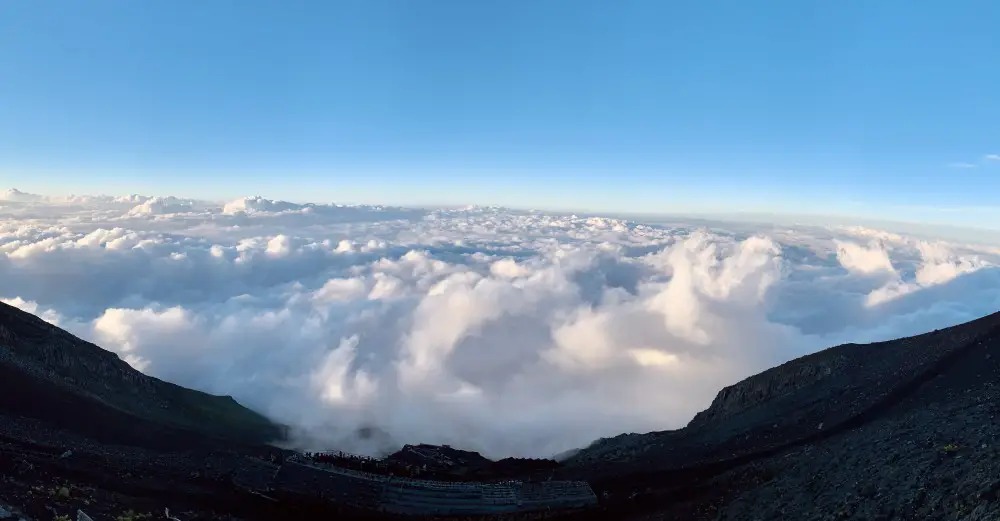
DAY 3. Sunrise climb from the 8th Station (3,250m) to the top of Mount Fuji (3,776m) and descend to the 5th Gotemba Station (1,450m)
We slept surprisingly well. It was quiet in the hut and no one seemed to snore, or maybe we just didn’t hear? Most of the people who sleep in the 8th or 9th station (if not all) plan to hike to the top for sunrise. The wake-up call in the hut was set up shortly before 2am. You can’t really sleep late here, but considering the fact that I fell asleep at 8 pm, I got 6 hours of sleep. Not bad at all.
Sunrise hike to the top of Mount Fuji
The most awaited moment of the climb – the famous sunrise from the top of Mount Fuji, which in Japanese even has a special word “Goraiko” was at 5.10 am. If you climb in early July, it will be even earlier – around 4.30 am. The hike from the 8th Station to the top was supposed to take 2 hours. We wanted to be on the summit on time and expected crowds on the trail, so we packed our backpacks quickly and hit the trail at around 2.40 am.
Although it was not a weekend but Monday and Japan’s borders were still closed for foreign tourists (we were climbing in August 2022), the trail was packed with people! The view of the zigzag path leading to the top, illuminated by the climbers’ headlamps, was truly unique. I usually avoid crowds but, I have to say there was something mystical about being part of this huge Japanese climbing expedition. We climbed slowly under the dark, starry sky. Overtaking was not possible, the path was narrow and the pace of some of the people, especially those who started the night climb below the 8th Station, was quite slow. I bet none of the climbers slept 6 hours as we did.
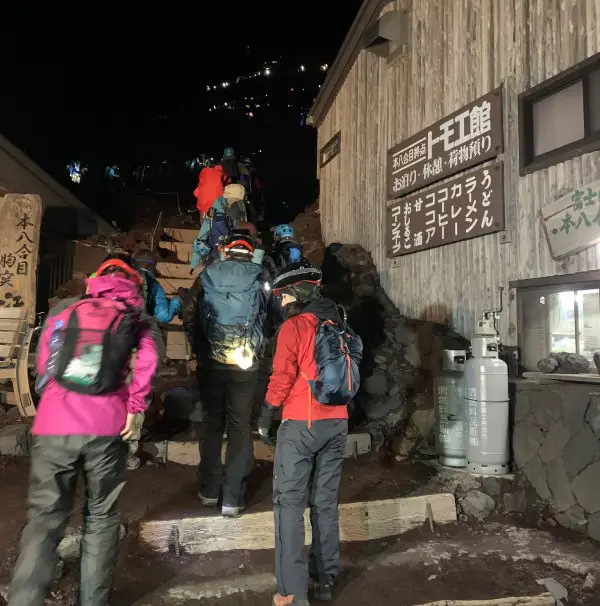
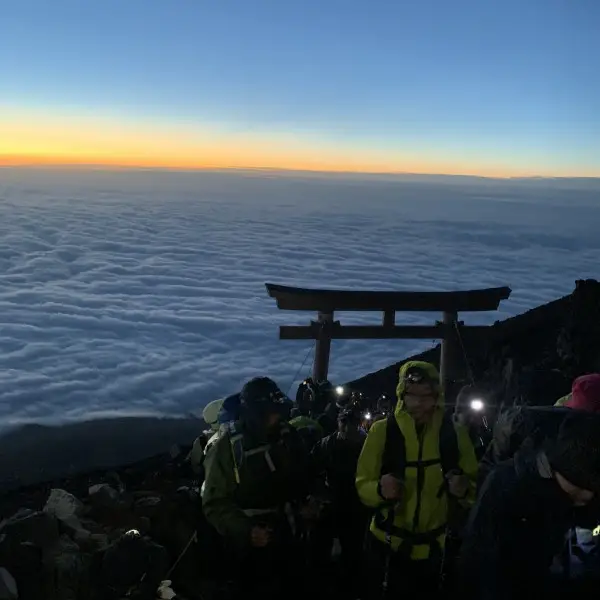
Amazing sunrise above the clouds on the roof of Japan
At 4.40 am we reached the summit. We were not too tired and well prepared – had our warmest clothes on. Although it was cold and windy at the summit, as expected at such altitude and this hour, the weather was generally fine and the sunrise was awesome.
Standing among hundreds of other climbers waiting for the sun to emerge from under a thick blanket of clouds was an unforgettable experience. Although I had climbed Mount Fuji a few months earlier on a one-day off-season ascent, the summit sunrise was a completely different and unique experience.

Mount Fuji sunrise "goraiko"

Walk around the crater and Mount Fuji’s highest point
After sunrise, we went around the crater to explore a bit more of Japan’s famous roof. The surrounding views were otherworldly: a powerful crater sleeping below, clouds hurrying across the sky in, and countless mountain ranges lying like a huge carpet under my feet. But what kind of view is that, if I can’t see Mount Fuji from here!? – I joked. I guess it’s the only place in this part of Japan where you can’t see it, isn’t it? 🙂 And then Mount Fuji’s shadow appeared.
Since my first Mount Fuji climb, a few months before, I knew I had to go back to hike the nearly 3-km trail around the crater, officially called “Ohachi Meguri”. At that time, we did not have time for that, as during our one-day climb, we were in a rush to safely descend to the 5th Station. But I felt the walk along the crater rim must be amazing and wanted to be able to enjoy the crater a bit longer. However, I did not expect to see the shadow of Mount Fuji from its top, too – it was something truly magical.

Mount Fuji crater loop
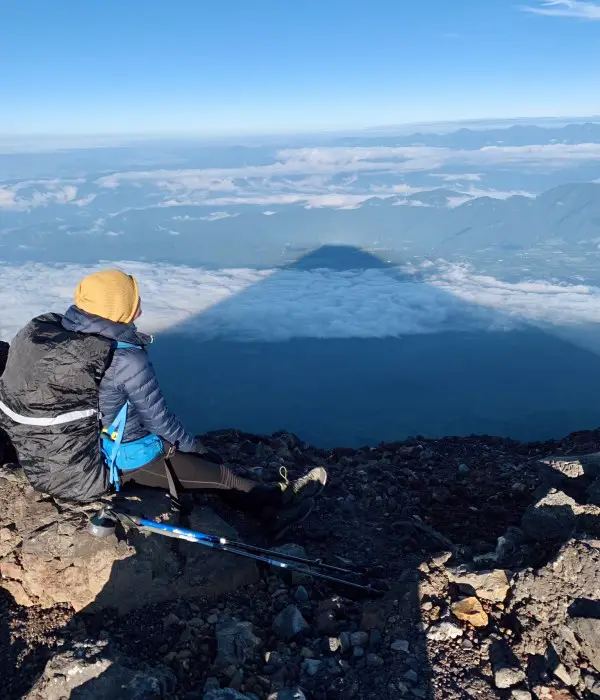
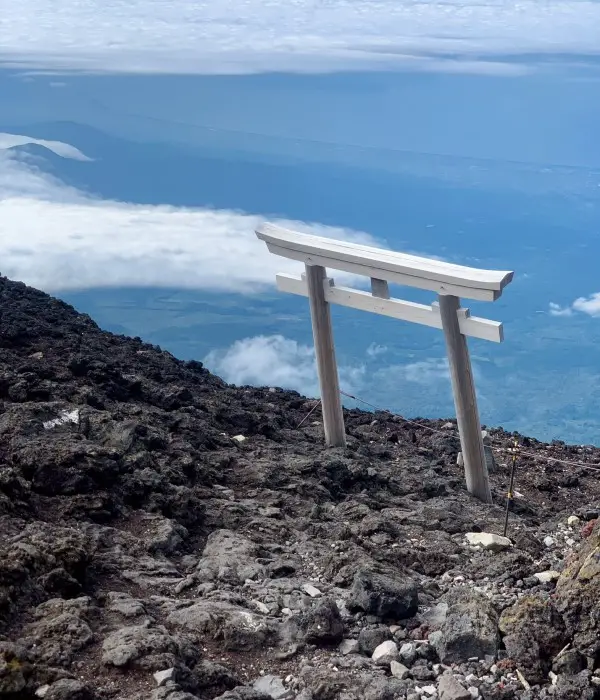
If you have enough time and strength to complete the entire summit crater loop, you will reach the highest point on Mount Fuji – Kengamine (3,776m) on the opposite side of the crater rim when you ascend the Yoshida Trail. The winds can be very strong here, so I suggest walking along the crater rim only in good weather. I climbed Kengamine on my previous Mount Fuji’s ascent but gave up this time as the line to get to the top and to take a picture was just too long.
Kengamine - the highest point on Mount Fuji


Well deserved breakfast
At 7.15 am we arrived at the simple hut on the edge of the crater, opposite the shrine and the post office. Yes, there is a post office at the top of Mount Fuji! This year it was finally – after the pandemic – open until around August 20. We were hungry and tired. We ordered coffees, two per head 🙂 and ate our bento boxes consisting of inari sushi – fried tofu pouches filled with rice – bought at the hut at the 8th station.
I finally saw the famous soft drinks vending machines, which I heard so much about. Yes, there are vending machines on the top of Mount Fuji too! To tell the truth, I expected even more of them around, luckily these were the only two I saw during the 3- day hike.
Time to start going down
It felt great to stand on the top of Mount Fuji again. The whole area felt so familiar, yet I was standing at the top of the world’s most iconic volcano. After taking a few photos at the torii gate that I had crossed during my previous Mount Fuji climb via the Fujinomiya Trail in May, we started descending at 8 am. We took a different route, the longest of all four – the Gotemba Trail. And guess what? This was probably my favourite part of our 3-day hike!
I've never expected such colors on Mount Fuji
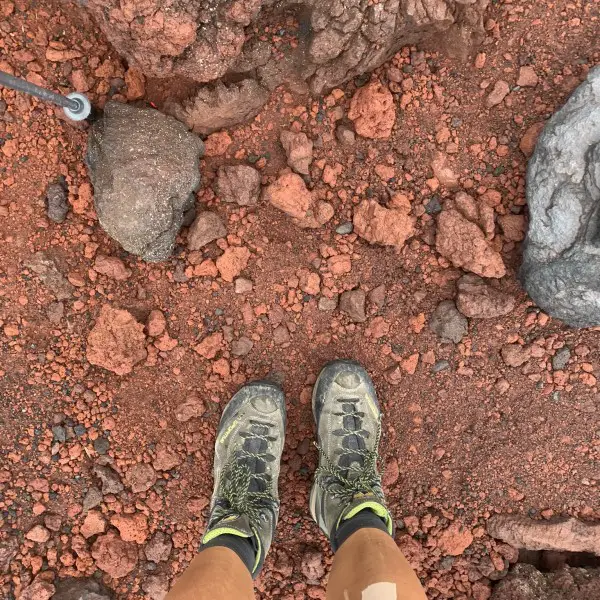

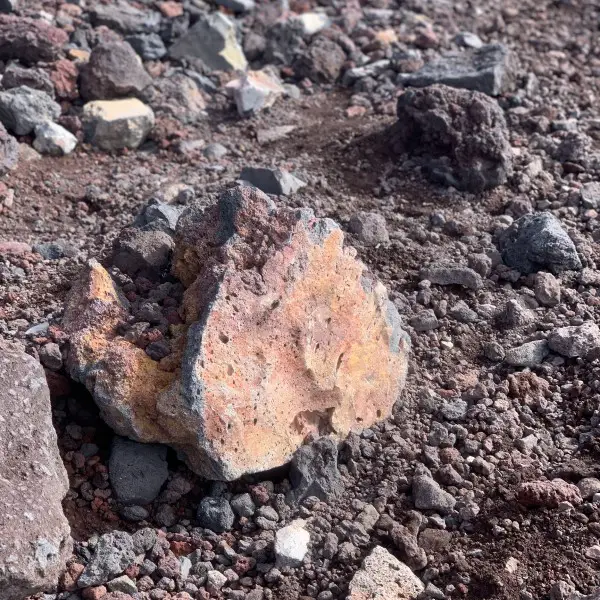
The best trail for descending Mount Fuji - the Gotemba Trail
Who said descending a mountain as big and famous as Mount Fuji must be tiring, especially on the knees, and that the trail must be crowded? If you are planning to climb Mount Fuji, you just have to go down the Gotemba trail. It is so much fun! Let me explain it.
First of all, there is quite a nice trail from the top to the 7th Station, not as steep as some sections of the Yoshida and Fujinomiya trails, so not so terrible for the knees. Second, there was hardly anyone, which was almost unbelievable. Given the crowds atop Mount Fuji that day at dawn, the Yoshida Trail must now be packed.
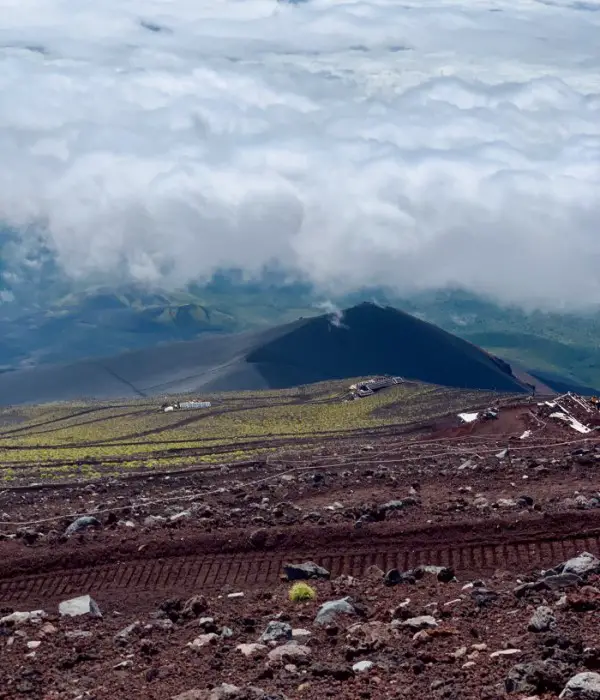

Above the clouds - going down the Gotemba traiL

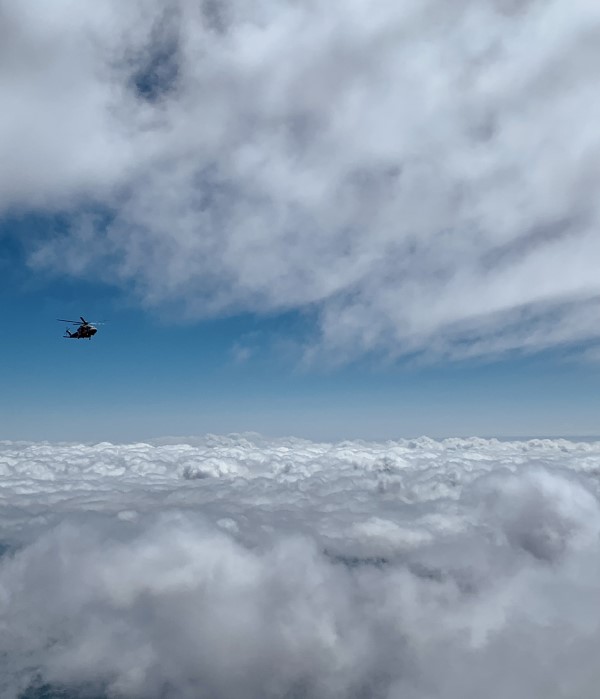
Third, the views were amazing, and you will also have the chance to see Mount Hōei / Hoeizan (2693m), which is Mount Fuji’s secondary crater from the last eruption in 1707. The trail to Hoeizan branches slightly off the main Gotemba trail below the 7th station. You can walk to the edge of the crater in less than 10 minutes. But that’s not all yet…
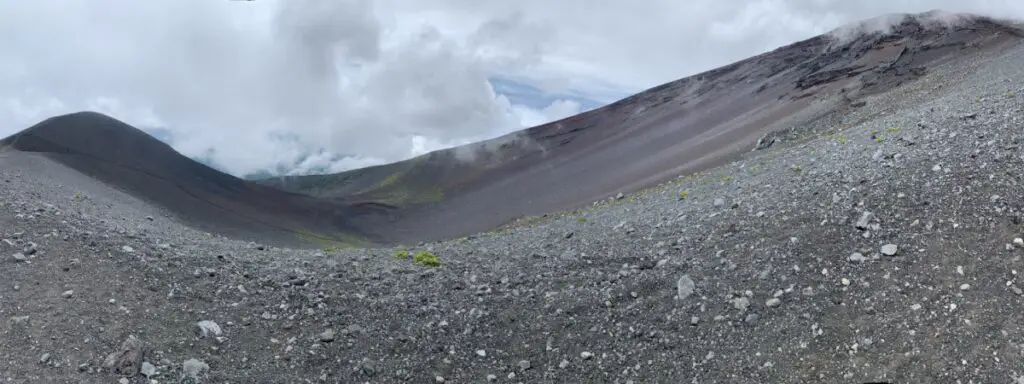
Exploring Mount Hōei - Mount Fuji's secondary crater

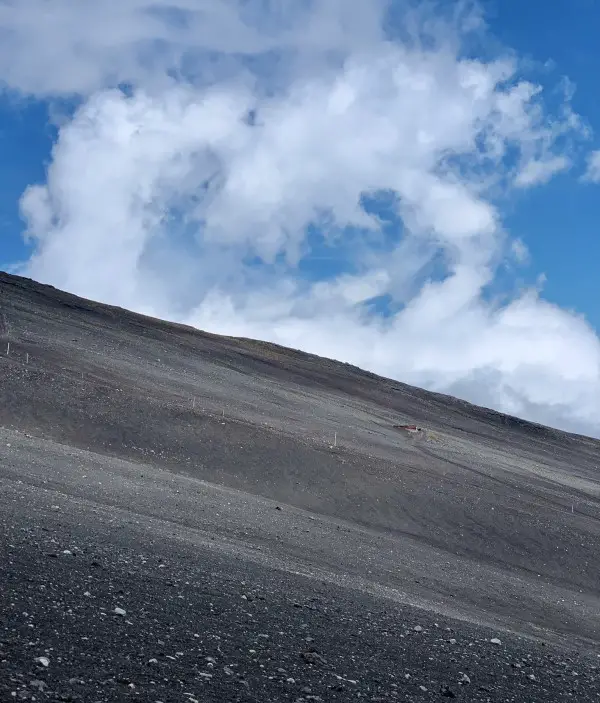
"The Great Sand Run" and running down on the Gotemba Trail
The section called “The Great Sand Run” (Osunabashiri), which goes down from the 7th (3,040m) to the 5th station (1,450m) of the Gotemba Trail, is a wide, straight, covered in volcanic gravel path where you can run 1,500 metres down – almost half of Mount Fuji! Taking long steps, you don’t even need to run, allows you to cover in minutes distances that took hours to hike up! The surrounding scenery looks a bit like the Moon, and once the fog and clouds clear up, the views are stunning. There are hardly any people and no mountain huts, so you have Mount Fuji to yourself again.
The gentle slopes and volcanic gravel made the descent easier than expected. The white rope marked the trail, so it was easy to follow. We were awarded for descending the longest Mount Fuji trail shortly before reaching the 5th Station. The views from Oishi Chaya, a simple tea house with outdoor tables where we finally relaxed, were truly amazing!
"The Great Sand Run" was so much fun!
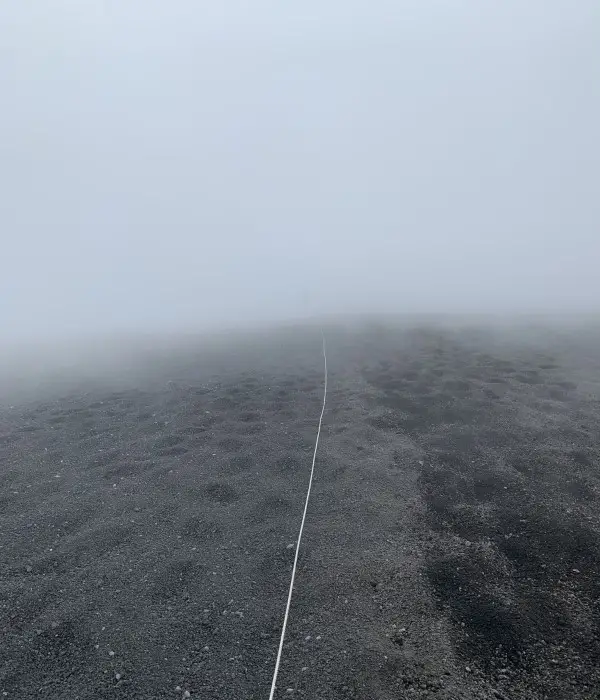
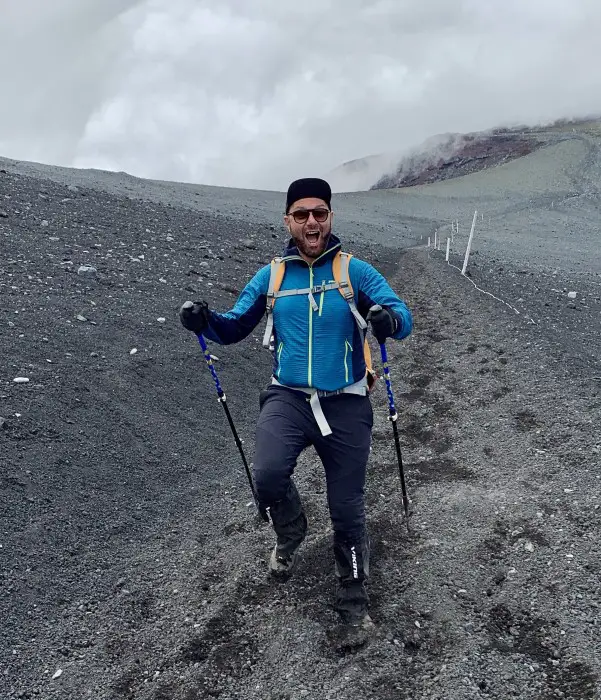

Things to know when taking the Gotemba Trail
There are no facilities between the 7th and 5th stations, so be sure to stock up on water and snacks in advance. It took us around 4.5 hours to descend (including breaks).
Buses from the 5th Gotemba Station to Gotemba train station are less frequent (4 buses a day in the climbing season), so waiting times can be long or you will need to take a taxi. With the help of the friendly staff welcoming the tired climbers at Gotemba 5th station with a smile, we called a taxi to…
Finish your hike in a Japanese-style: Relax in onsen
Extremely popular among Japanese hikers hot spring bath (onsen) is a perfect way to relax after climbing Mount Fuji as it helps to prevent muscle soreness.
We went to Otainai Onsen Kenkou Centre (御胎内温泉健康センター), 20 minutes by taxi from Gotemba 5th Station. This rather large, typical Japanese spa offers great indoor and outdoor pools, sauna and relaxing space – both outdoor and indoor as well. There are even Mount Fuji’s views from both the outdoor pool and the relaxing space, if you don’t have enough of it yet 🙂 The entrance fee (weekdays) was 600 JPY for 3 hours.
Time for a beer and for a bath. Time to relax!
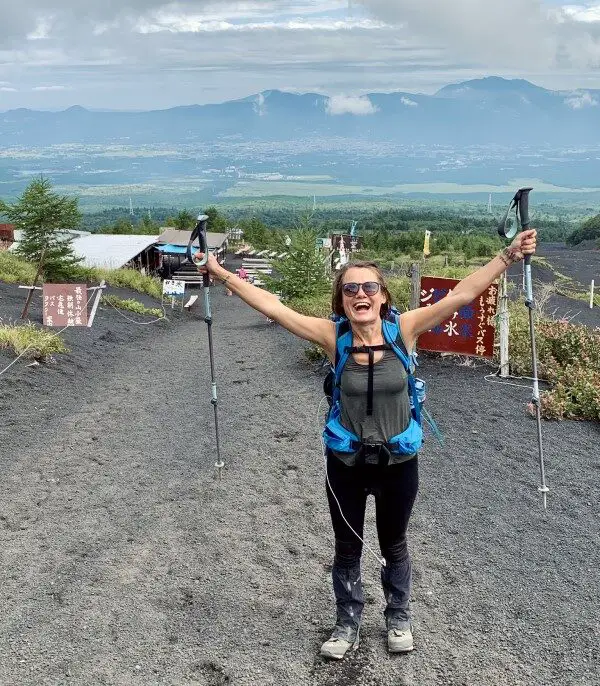

DAY 3. SUMMARY (11km/470m up & 2,300 m down/10h incl. breaks)
It was a very long and tiring day in which I would not change anything. We were lucky that the weather was good and we could enjoy the amazing sunrise. We were well prepared. Dressed for winter or for a trek in the Himalayas, we were not cold like many people standing on the top next to us. We had a lot of fun going down the Gotemba trail, and it wasn’t bad for knees at all.
3-DAY MOUNT FUJI CLIMB SUMMARY (distance/elevation change/time)
Section | Distance (km) | Elevation change (m) | Time incl. breaks (h) |
DAY 1 Way to the 5th Station | 12 | 1400 | 6 |
DAY 2 Way to the 8th Station | 3.5 | 1000 | 6 |
DAY 3 | 11 | 470 up/2300 down | 10 |
Way to summit from the 8th Station | 1.7 | 470 | 2 |
Watching the sunrise | N/A | N/A | 1 |
Summit crater loop (incomplete – to Gotemba trail only) | 1.5 | flat | 2.5 |
Descend via Gotemba Trail | 7.8 | 2300 | 4.5 |
TOTAL | 26.5 | 2870 up/2300 down | 22 |
Don’t have 3 days? Climbing Mount Fuji may take much less time and can be done in:
- Two days, which is the most popular option. It requires taking the bus to the 5th Station. Moreover, the exact distance, elevation change and time will depend on the trail you take. If you choose to ascend and descend the Yoshida Trail, which is the most popular option, and skip the summit crater loop, you will only need around 8h to climb and 5h to descend. It will be a 10.5 km return trip with the elevation change of 1500m up and 1500m down.
- You can also choose a different route. I have recently done a 2-day Mount Fuji climb via the Subashiri Trail, which I loved. Read a full story: CLIMBING MOUNT FUJI OFF THE BEATEN PATH – THE SUBASHIRI TRAIL & PRINCE ROUTE
One day (it is so-called “bullet climb” if you climb to reach the peak at sunrise), but altitude sickness risk and very tough physical challenge must be taken into account. Read about my off season one-day ascent here: MOUNT FUJI OFF SEASON ONE-DAY CLIMB. HOW TO DO IT RIGHT?
There are really many options to choose from, so you will surely find something for yourself. With a bit of good preparation, no matter which one you choose, it will be an unforgettable adventure!
Just like ours 🙂

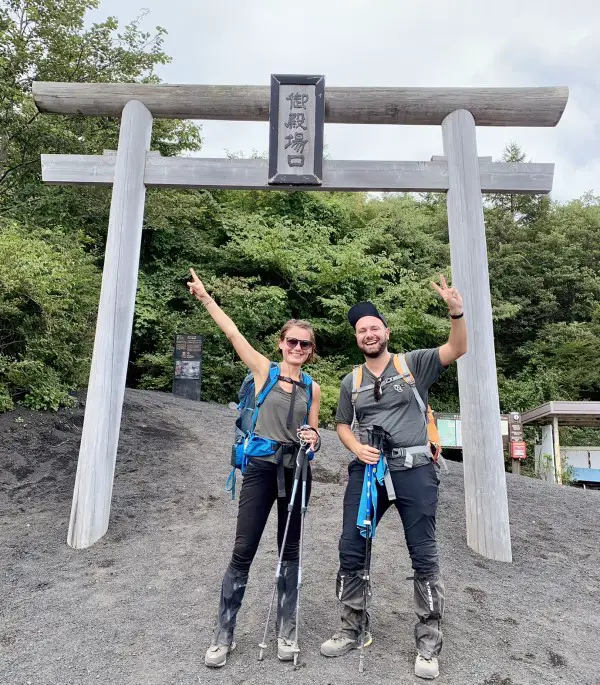
CLIMBING MOUNT FUJI: PRACTICAL INFORMATION & TIPS
If you liked my story and you are thinking of climbing Mount Fuji, read HOW TO CLIMB MOUNT FUJI & HAVE FUN? TIPS TO PLAN THE CLIMB in which you will find lots of tips how to plan it well:
- Mount Fuji climbing season
- Official Mount Fuji trails: description and comparison
- What has changed in Mount Fuji climbing after the pandemic?
- Tips on how to make climbing Mount Fuji enjoyable?
- A packing list for climbing Mount Fuji
- What I didn’t like about climbing Mount Fuji
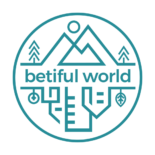
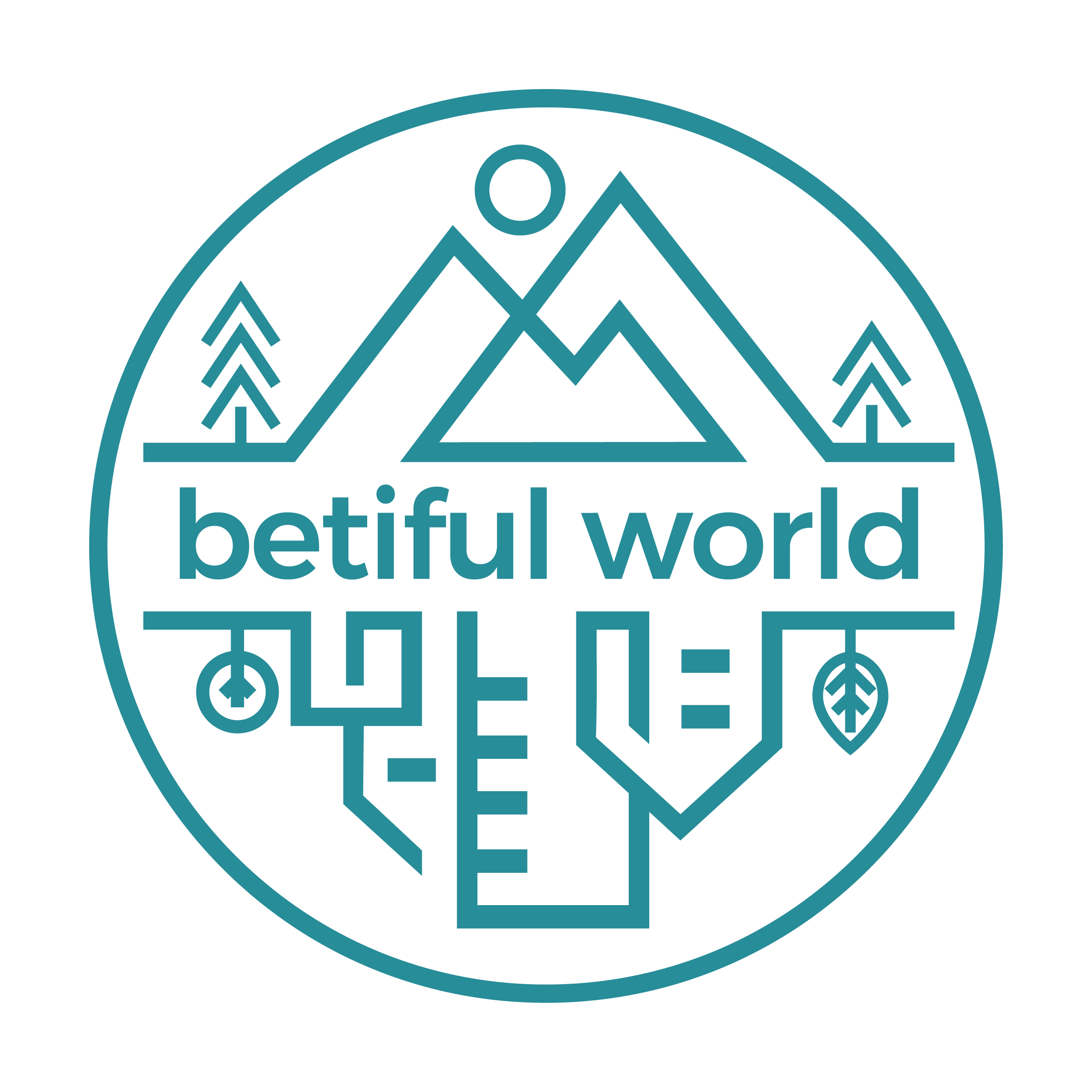
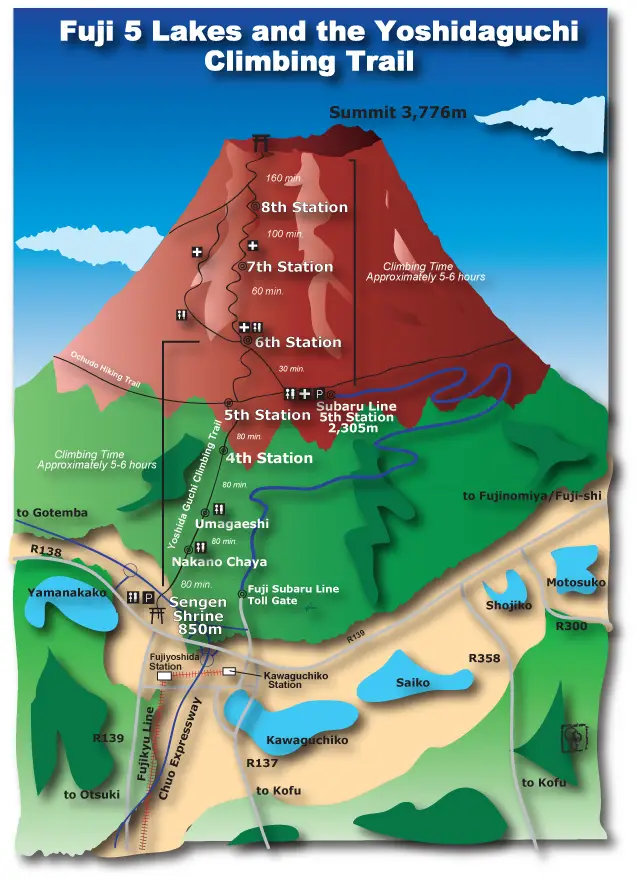

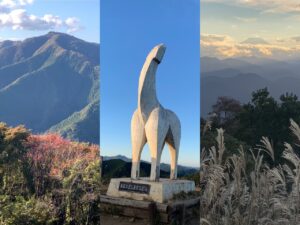
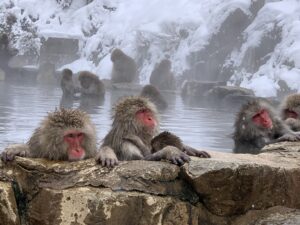
Thank you for a fabulous blog on climbing Fuji. My partner and i also climbed from Station 0 in 2019 and plan to go back one day. I was 69 when i climbed it and loved every minute.
Hi Jeffrey, because age is just a number!!! Thank you for reading my blog and maybe… see you one day on the trail 🙂
Thanks a millions for a very impressive blog. We plan to hike up from the 5th station on Aug 27, 2023, overnight at the 9th station and come down the Yoshida trail.
Your blog gave me the new concept and will try to convince my daughter to change direction.
I am 74 yrs old and will hike with my daughter, son-in-law, and my son – all in their early 40.
I am fit and hike regulartly but hiking at altitude has been a long forgotten experience.
Looking forward to the hike and again thanks so much for your note.
Thank you for your comment and looking into my blog. It always make me very happy when someone finds it useful. Have an awesome climb! PS. Age is just a number 🙂
Hi Beti,
Thank you for this wonderfully detailed and fun-written post 🙂 It has really inspired me to take on this adventure!
I was wondering if you have any idea whether this 3 day hike is also possible in early June?
Warm regards from Amsterdam 🙂
Hi Lasse, thank you for your comment 🙂 So nice to hear that someone felt inspired after reading my post. That’s what keep me writing 🙂 You won’t be able to do 3-day hike in June as mountain huts are closed in June. The official climbing season for Mount Fuji starts from July and ends in September. Only some huts at the 5th Station are open all year round, so you won’t be able to sleep in a hut at a higher altitude. You could hike to the 5th Station and spend the night there or do it as a day hike and go down. You could also do the off-season 1-day hike to the summit, which I recommend only with a professional guide. You can read about my off-season hike in May here -https://betifulworld.com/mount-fuji-off-season-climb-in-one-day-how-to-do-it-right/
Ah thank you for your reply 🙂 And so quick too! I believe that my partner and I will then only hike to the 5th station, and leave Mt Fuji’s summit for our next trip..
My pleasure 🙂 Happy hiking!
Hi, I so happy i read this blog. I already considered to do the exact same route because I want to start from Fuji-Q and finish at Hakone. This blog is very detailled, inspiring, fun to read, and has all information I need. Can’t wait for september 2023
Thank you so much 😉
Hi Cedric! You probably don’t even realize how happy your comment made me! Thank you and happy hiking 🙂
Hi Beti! Thank you for the ultra informative blog! I’ve referenced your trips and blogs on Mt. Fuji more than a hundred times while researching on which route and possible accommodations I can get and take for my trip up. Was wondering if you can help answer some of my questions.
1. Do you happen to know long it might take from the Fuji-Subaru line 5th station to the start of the Subashiri Trail?
2. Do you know how to get from the 5th Gomteba station back to Fuji-Subaru line 5th station? Also, might you know how long it might take? As I have got a transport waiting there but would like to descent via the Gomteba Trail rather then the Yoshida Trail.. (Really need to plan my time well and wisely..)
Looking forward to your assistance and advice~ (If you really don’t have the answers no worries~ If you can just point me to a certain direction, I’ll try to do more research there..)
Thank you very very much in advance~~ 😊😊🙏🙏
Hi Skyleigh, first of all thank you for such nice feedback! Your questions are an inspiration for me – they make me want to explore Mount Fuji more and share even more!
To answer your questions:
1. The Maps .Me app which I use for offline navigation says there is a 4.2 km trail connecting Fuji Subaru 5th Station and Nagato-Sanso (marked on the app as Osada Sanso) on the 6th Station of the Subashiri trail at 2700m. But I’ve never walked it so I’m not sure how it looks. You could ask for more details on “Hiking, Climbing and Camping in Japan” Facebook group. Maybe someone knows about it.
2. How about climbing Mount Fuji from the 5th Gotemba Station and descending via Yoshida trail back to Fuji Subaru line 5th Station? 🙂
Jokes apart, you could take:
– taxi to Gotemba Station as buses are infrequent (30 min/ 5000 JPY)
– bus from Gotemba Station – to Kawaguchiko Station (75 min – at 15.45)
– bus from Kawaguchiko Station to Fuji Subaru 5th Station (55min – last bus 5.30pm) (taxi should cost ~ 14,000 JPY from Kawaguchiko Station – including the fee for the toll road).
Honestly, to me it seems too much hassle especially after coming back from the top of Mount Fuji. Going up to Fuji-Subaru line 5th station does not make much sense as after you will go back down with your vehicle to Kawaguchiko Station again. But of course it’s doable if you really want to/have to. You could probably take a taxi from Gotemba to Fuji Subaru 5th Station directly, which should take around only 75 min. That’s what Google Maps says. It also says it should be around 18,000 JPY but I’m not sure if that’s really the price and I think you will have to add tolls as well.
Bus schedule from/to 5th station: https://www.japan-guide.com/bus/fuji_season.html
Gotemba Station – Kawaguchiko Station bus I’ve got from Google Maps.
Good luck! I’m so curious how do you plan it in the end! This one is tough but I’m sure you can make it 🙂
Excellent blog! Very well explained and fun to read, even funny sometimes. Very organized as well. It’s inspired me to follow in your footsteps (although I may start at Station 5 to skip the first day).
Hi Kai! Knowing that other people like my blog makes me very happy, and reading such comments keeps me writing, so… thank you so much for leaving your mark on my blog 🙂 I’m sure you’ll have a great time climbing from the 5th station. Climbing Mount Fuji is epic! I climbed it from the 5th station a few weeks ago and loved it. I will share more details soon!
Thank you for this really detailed blog post, I’m planning on climbing Mount Fuji from the fifth station in a couple of weeks and this was really helpful.
Hi Chloe B! Thank you so much for your comment 🙂 Whenever I want to stop writing, I think about feedbacks like yours and… I don’t give up! I wish you blue skies while climbing 🙂
Thank you for the detailed information for climbing up Mt Fuji from the bottom to 5th station. We are going to Japan in September, 2023 but just one week late for the climbing season. I like the photos you took on the way.
Hi Pauline! Thank you for looking into my blog and for your such nice words 🙂 Have fun in Japan!
Hi Beti,
Hoping all is well.
Great to come across your blog.
Just wanted to check if you needed any sort of permit to climb Mt Fuji from the base? Any kinda paperwork they check on the way up?
Thanks a ton.
Hi Anubhav,
I have some good news for you. Permits are not required to climb Mount Fuji during the climbing season (Jul-Sep). However, if you hike during the off-season you should submit a climbing form/plan. Happy climbing!
Hello, thanks for your great guide! We are planning to go up the Yoshida trail in the morning and down the Gotemba trail on the very last day (Sep 10). But a bit worried that the trail will close while we’re still on it at 5pm. If we miss the last bus at Gotemba 5th station, how do we call a taxi? I saw that someone helped you but I’m thinking there may not be anyone on the last day. Also, how much did it cost from the 5th station to Gotemba station please?
Hi Niro! Thank you for looking into my blog. The last bus leaves at 17:10, so I think, you have plenty of time to reach the bus stop. If I remember well, I paid around 5000 JPY for taxi. I traveled to the onsen, not to the Gotemba Station, but it should be more or less the same. You could use the UBER app, and if there aren’t any cars around, maybe you can try this http://gotenbataxi.com/englishtop.html? Keep in mind I don’t use often taxis in Japan, and unfortunately I have never used this service – I just found it on Google. But it looks legit and it’s in English (alleluia!!) However, since the buses run until Sep 11, I would really expect there would be someone at the 5th Station to help you, if you need it. So don’t worry too much and.. say hello to Fujisan from me and enjoy your hike! 🙂
Thank for your blog, after reading it i’ve desided to change my plans and it was awasome!!
If someone is intetested, you can actualy do it in 2 days if staying in 7th or maybe 8th station.
It took me around 7h to get from the shrine to seventh station.
If someone planing to do so, my advise is to start as early as possible (before 10am for 7th station and 8am for 8th station) and the reason is huts. In most cases you have to check in before 18:00-19:00pm, and trail is too beautiful to run through in fast pace.
Have fun!
OMG I’m so happy! You just made my day 🙂 Such comments are the best motivation for me to keep writing and sharing my adventures 🙂 And thank you for sharing your thoughts. I totally agree, you can push until the 7th/8th Station if you start early and are fit enough. We just started very late, and usually do not hike fast, as like you said, it is just too beautiful…Thank you again!
Awesome. You have listed everything down to the detail. On one climb, I began from my apartment in Fujikawaguchiko town. It took me 26 hours to get back. After I got back, I slept like a dog for almost 20 hrs straight. I was exhausted but felt accomplished.
Thank you so much for such a detailed sharing. I made it to 8.5 Tomoe-kan this year but weather was bad so guide said wouldnt take us up to the tip at 2am. Planning to go again in 2024. I hopped on the bus from Tokyo Station at 630am but wasnt able to start hiking until 1pm coz bus had to stop and let people rent gears and lunch + Briefings by guide at 5th station. Your path allows me to start early, highly likely will follow your footsteps.
Hi Alice! It’s my pleasure 🙂 Thank YOU for reading.
Your guide made a good decision; climbing Mount Fuji in bad weather is neither fun nor safe. I’m aware of a direct bus from Shinjuku to the 5th Station, but is there also a direct bus from Tokyo Station? Or was it a private bus arranged only for your group?
Next time, if you want to start early, you should stay overnight in Kawaguchiko and take an early bus from Kawaguchi Station—the first departure is at 6:30 AM. Or, as you said, climb slowly from the bottom; it is a fantastic adventure if you have a little more time!
Good luck!
Beti
Hey Beti,
Such a lovely journey. My husband and I are also planning to climb Mount Fuji from 0th station up to 5th station, because we will travel in April so I guess the trail from 5th station will closed. Sadly we couldn’t make it to the submit.
Do you happen to climb this road off-season and mind sharing some experiences?
Hi Mei,
First of all, big thanks for visiting my blog! I have never hiked this trail off-season but I heard it’s perfectly doable. It will be a great off-the beaten path Mount Fuji experience. You could also make a little detour to Fuji Subaru 5th Station for some very touristy experience (food / souvenirs) as it’s open all year round. In theory you could also go down by bus as buses (infrequent) operate to/from Fuji Subaru 5th Station off-season as well.
Enjoy your hike and say hello to Fujisan from me!
Beti